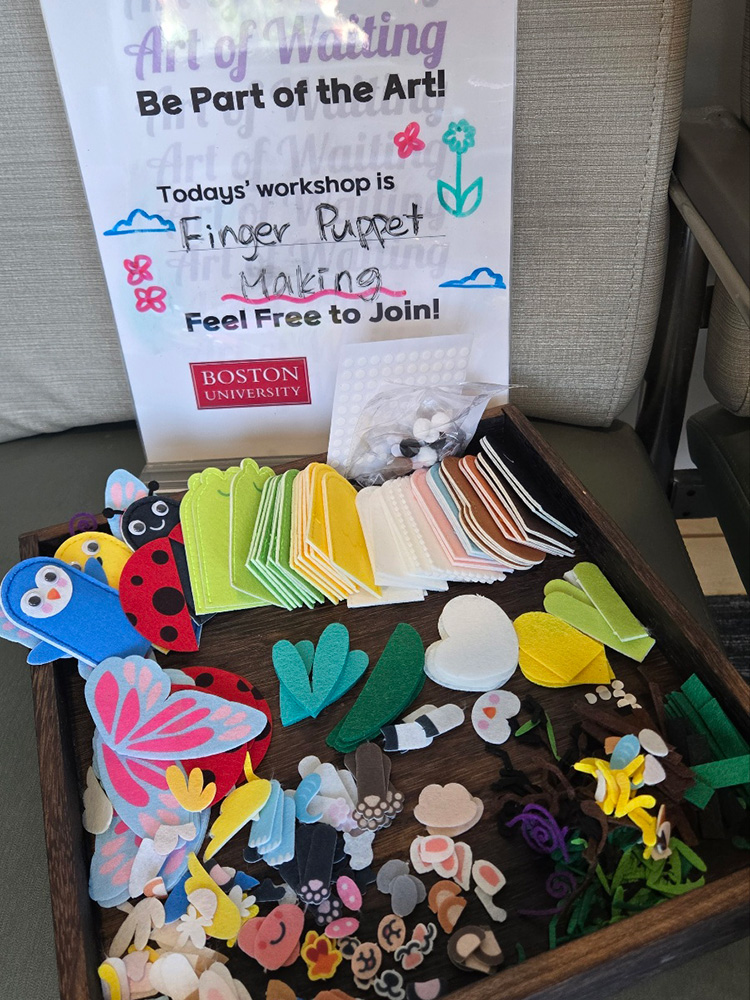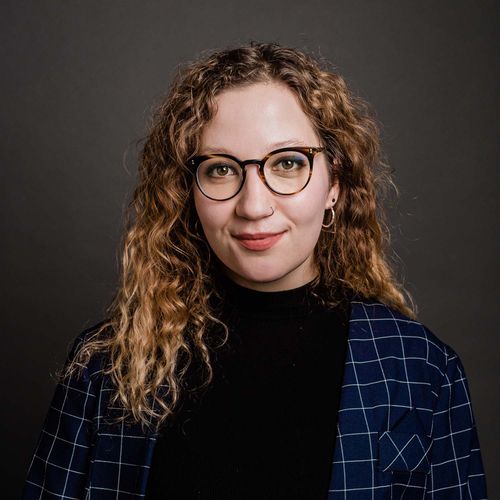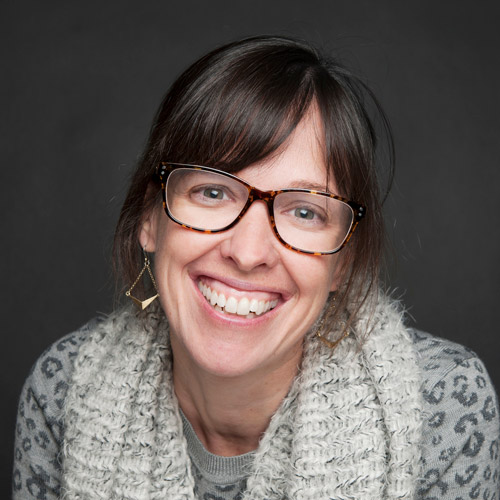This CFA Student Is Using Art to Help Medical Patients

Jieun Lim (CFA’26), a master in arts education student, plans to use her degree to help individuals in medical settings.
This CFA Student Is Using Art to Help Medical Patients
Jieun Lim’s unusual path began with her own cancer diagnosis
Artistically, Jieun Lim has lived many lives.
Furniture design, sculpture, photography, painting, puppeteering—her repertoire has touched on a little bit of everything.
Now, Lim (CFA’26) is at Boston University earning a master’s in arts education. Her plan? Using art to help individuals in medical settings. For her latest project, she runs crafting workshops at Boston Medical Center (BMC) for chemotherapy patients.
It’s a passion born out of her own journey as a cancer patient.
Waiting for a chemotherapy chair to open can be an anxiety-provoking experience. It can also be…boring.
The workshops that Lim and her colleagues lead are meant to help on both fronts.

The “Art of Waiting” workshops are a part of Arts|Lab, a collaboration between the College of Fine Arts and the BU Medical Campus. Once a month, Lim and other Arts|Lab volunteers head to the chemo waiting area at BMC armed with art supplies. Once there, they lead any interested patients through simple crafts—origami, pipe cleaner sculptures, booklet-making, finger puppets—anything that keeps hands and minds occupied. (Volunteers are responsible for brainstorming and planning different crafts.)
As a patient, “waiting time is often [unpredictable],” says Lim, who joined the Arts|Lab initiative in January. “We try to take the fear out of that vulnerable time by helping people do something using their hands.”
Not everyone participates. (Lim says that’s understandable and the volunteers are fine with that.) Nor are people creating pipe cleaner masterpieces in the waiting room. But that’s not the point, Lim says.
The goal, she says, is stress relief. “If you feel like you spent your waiting time positively—that’s my goal.”
Drawing on her own experience to help others
Lim knows exactly how the patients feel.
She was diagnosed with thyroid cancer the summer before she started college at Indiana University Bloomington. She’s now been in remission for about a decade. But she remembers what it was like to live with unknowns—and to carry the burden of staying strong for loved ones, even as her body was battling itself.
That’s one of the weirder parts about a cancer diagnosis, she says.
“It’s really hard when your caregivers look more sad than you do [about bad news],” she says, laughing. “I was the one with cancer—but I was so worried about my mom because she was so sad!”


The simple crafts Lim leads patients through, such as making finger puppets, are meant to keep hands and minds busy.
Her diagnosis is what led her to art in the first place.
Thyroid cancer “was a life-changing experience that forced me to pause and reflect deeply,” Lim says. After her diagnosis, she switched her major from business to sculpture and photography.
“Art became a way for me to process what I was going through,” she explains. “Artists like Louise Bourgeois showed me that it’s possible to transform painful experiences into powerful art, rather than just crying in bed.”
But ultimately, Lim found herself chasing joy in her work.
Creating healing experiences
Lim came to BU to strengthen her teaching skills.
But before that, there was graduate school in London—following a stint making stage props—to learn furniture design. Lim spent about eight years as a furniture designer and artist. Her noncommercial work was inherently playful, she says, with funky shapes and soft colors reflective of her childhood. Now? Playfulness is her MO.

Lim had been exploring how to incorporate elements of play into everyday objects with her furniture designs. In CFA’s master of arts education program, “I’ve extended that sense of play into [creating] more interactive and healing experiences,” she says. “That led me to become involved in puppetry classes.”
Lim has been studying puppeteering with Felice Amato, a CFA assistant professor of art, arts education. It borrows elements of both stage and furniture design, which Lim enjoys. This summer, she’s the teaching assistant for an Amato-led puppetry elective for art teachers in an online master’s program.
“Many of our students are preparing to teach in the schools, but Jieun knew that she wanted to create something unique that would lead to a path that she couldn’t yet fully anticipate,” Amato says. “This led her to a rigorous investigation of possibilities, and, I think, a niche area that she will help to shape in the future: puppetry and healthcare.”
After graduation, Lim hopes to work in medical settings, doing things like using puppets to help educate young patients about their symptoms, for instance.
Why puppets? “Puppets have a unique ability to promote emotional expressions by creating a safe distance and acting as a protective layer,” she explains.
In March, Lim participated in the 2025 Emerging Creatives Student Summit, a respected arts summit for student creatives. There, she collaborated with a team to design a super-sensory playground for kids of all abilities. The project earned her team a grant and an invitation to present at another conference this coming October.
The experience solidified her path for her.
Lim says that after her diagnosis, she “realized that there is a healthy way to express agony through creativity. Now, it is my turn to offer and share with others what I’ve experienced through art during difficult times. I feel more capable of creating meaningful work and helping others participate in it.”


Comments & Discussion
Boston University moderates comments to facilitate an informed, substantive, civil conversation. Abusive, profane, self-promotional, misleading, incoherent or off-topic comments will be rejected. Moderators are staffed during regular business hours (EST) and can only accept comments written in English. Statistics or facts must include a citation or a link to the citation.